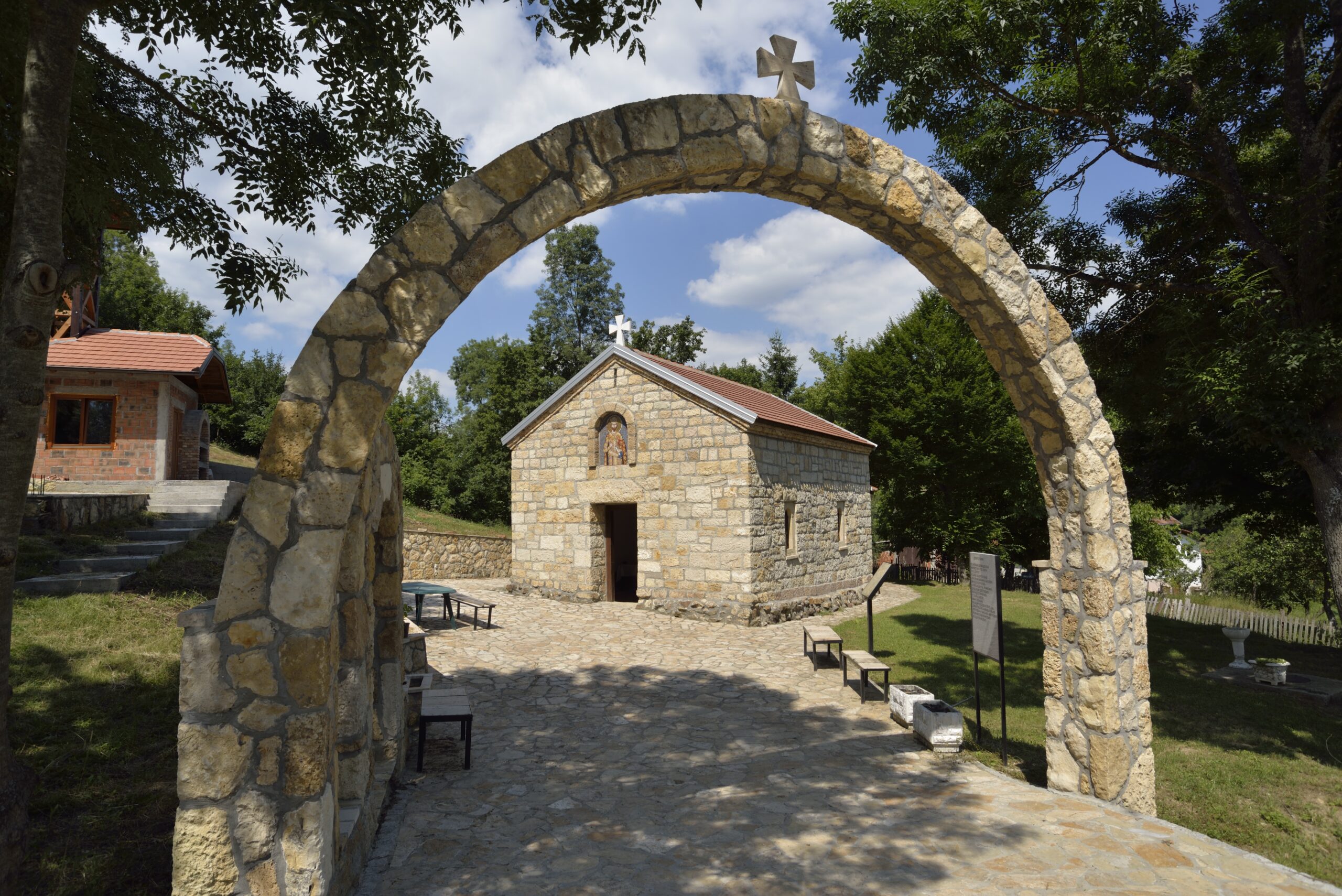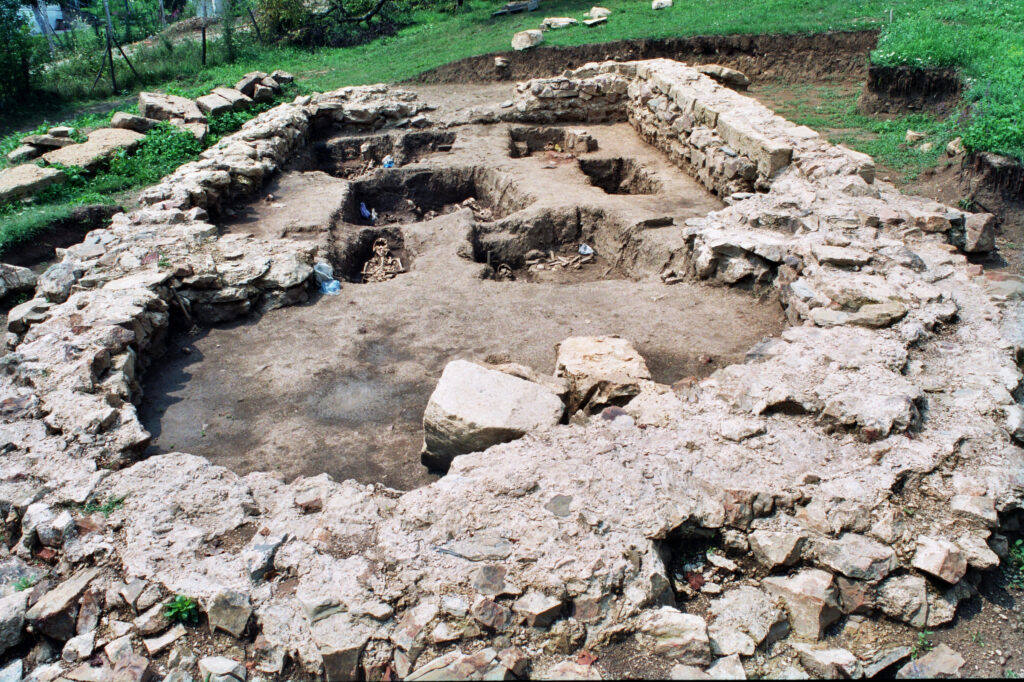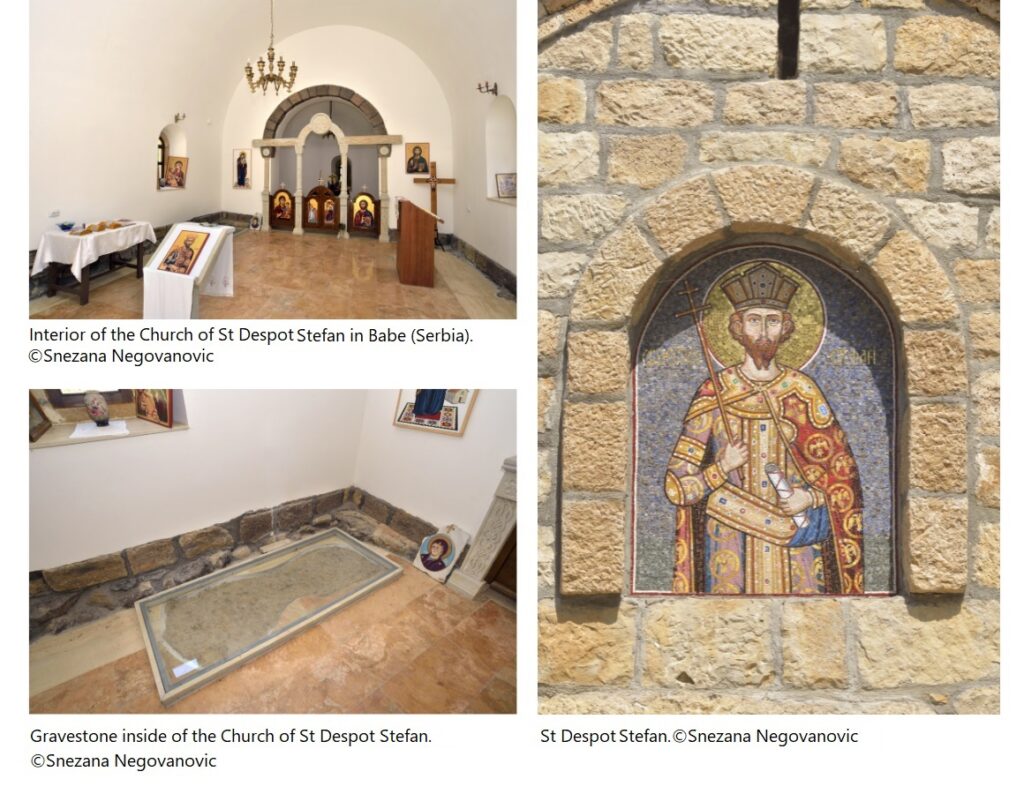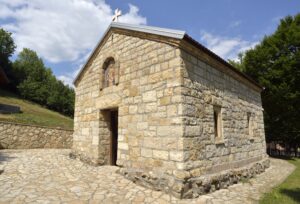
The village Babe is located on the slopes of the Kosmaj mountain, where the oldest churches of the city of Belgrade have been preserved, built or renovated after 1403, when Despot Stefan Lazarević declared Belgrade the capital of Moravian Serbia.
Although until recently, the inhabitants of the village of Babe did not have their own church, but went to the church in the neighboring village, the legend about the former existence of the church has been preserved. Even the name of the village Babe – “babe”, is synonymous with “nuns”. The archeological site was recorded under the name of Crkvina (crkva=church) during an archeological research in 1972. Traces of the walls of a building with a semicircular apse to the east were then noticed on the ground, and it was immediately assumed that the remains of the church were found. During 2002, archaeologist Zoran Simić carried out archaeological excavations at this site and the church was rediscovered.
The discovered building represented the remains of a single-nave church, a rectangular base with a very deep altar apse, semicircular on the outside and inside. The church had external dimensions of 12.30 x 7.10 meters. Along the longitudinal axis, it was oriented east-west. The entrance to the church, as usual, was on the west side.

Archeological excavation of the church in 2022. ©Snezana Negovanovic.
The church was built of crushed stone in the foundation zone and the above-ground part of the plinth to a height of 0.50 m from the ground level, while the walls, which were about 0.70 m. wide above this plinth, were made of properly and beautifully hewn blocks of stone of unequal size, bound with white lime mortar.
There were no traces of fresco-plaster on the discovered remains of the walls, as well as in the rubble from inside the church, which equally shows that the church was not painted.
About the roof covering and the roof construction of this church, by analogy with other churches, it can be said that it was vaulted with a semi-circular vault and with a gabled roof. None of the architectural elements indicate that the church had a dome.
According to current information from historical sources related to this area and based on the results of archaeological research, it is not known who the founder of this church was and to which saint it was dedicated. It is clear that this is one of the aristocratic endowments, built in the first half of the 15th century, during the time of the Despot Stefan Lazarević. The church was probably destroyed during the turbulent times in the 17th century.

Complete archeological excavations were carried out under the supervision of the team of archaeologists of the Cultural Heritage Preservation Institute of Belgrade, as well as the presentation of the archeological site. The obtained documentation was the basis for the preparation of technical documentation necessary for the renovation of the church. The proposal of the model of the new church in Babe was made by the expert architect of the Cultural Heritage Preservation Institute of Belgrade.
After the completed archeological research and presentation, on the initiative of the Serbian Orthodox Church, the local inhabitants and the city administration, it was decided to renovate the church in Babe based on the collected data and the technical documentation carried out. Necessary funds were collected from the diocese, city and local authorities, companies and individuals.
This is an example of very good cooperation of all participants. As far as the professional work is concerned, having in mind the further life of the church, all the initiatives of the Cultural Heritage Preservation Institute of Belgrade on common meetings were accepted and done. How good the spirit is established can be deduced from the great work of the village priest who managed to bring used, but now unnecessary, stones from the surrounding village houses to restore the facades of the church. This is very good as a material because it is a “mature” stone, extracted in local quarries long before today and as such is more similar to the original than it is now exploited.

church of St. Despot Stefan in the village Babe (Serbia).©Snezana Negovanovic.
On the foundations of the old church from the 15th century, the renovated temple has been consecrated in 2018. Since it is not known, as already stated, which saint the church is dedicated to, the renovated church is dedicated to St. Despot Stefan.
St. Despot Stefan is Stefan Lazarević, the son of Prince Lazar Hrebeljanović, the ruler of Serbia as prince (1389–1402) and despot (1402–1427). Despot Stefan Lazarević was regarded as one of the finest knights, a member of the Order of the Dragon founded by the Hungarian king Sigismund of Luxembourg. After the Turkish conquest of the southern Serbian areas, the former capital Kruševac was replaced by Belgrade, and from that moment the glorious rise and transformation of Belgrade and the northern areas began.
The Serbian Orthodox Church canonized Despot Stefan Lazarević 500 years after his death on July 19, 1927 and celebrates it on the first of August (July 19 according to the Julian calendar), together with his mother, Princess Milica, the nun, Venerable Eugenia.
By Snezana Negovanovic, from the Cultural Heritage Preservation Institute of Belgrade (Serbia).





Follow us: